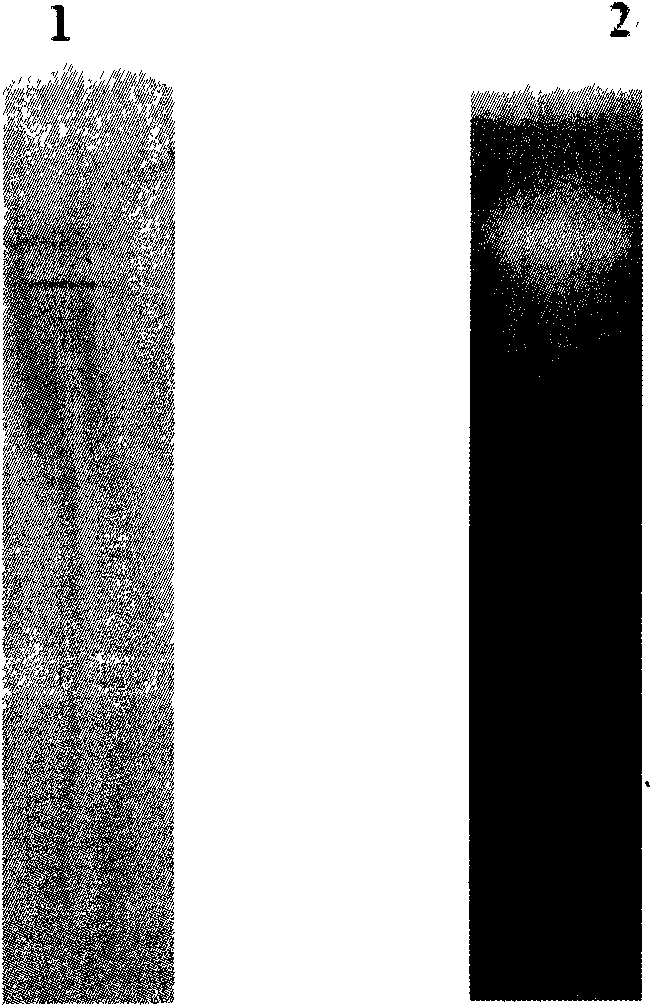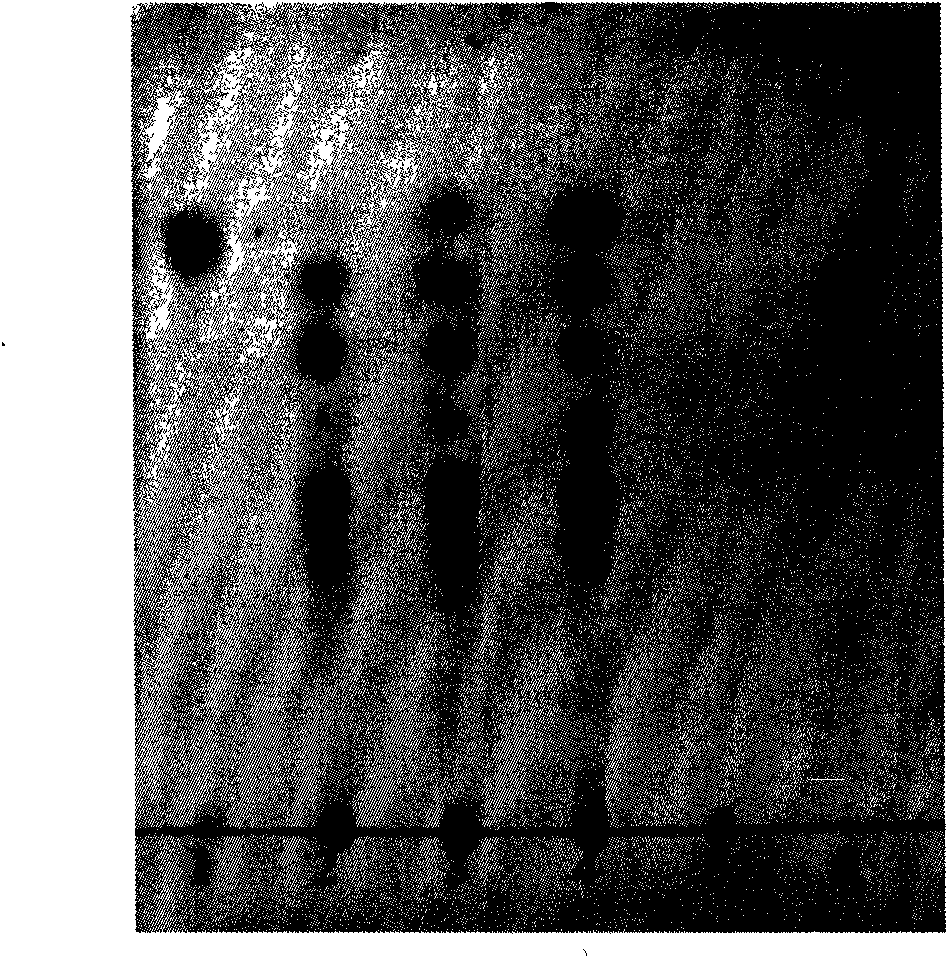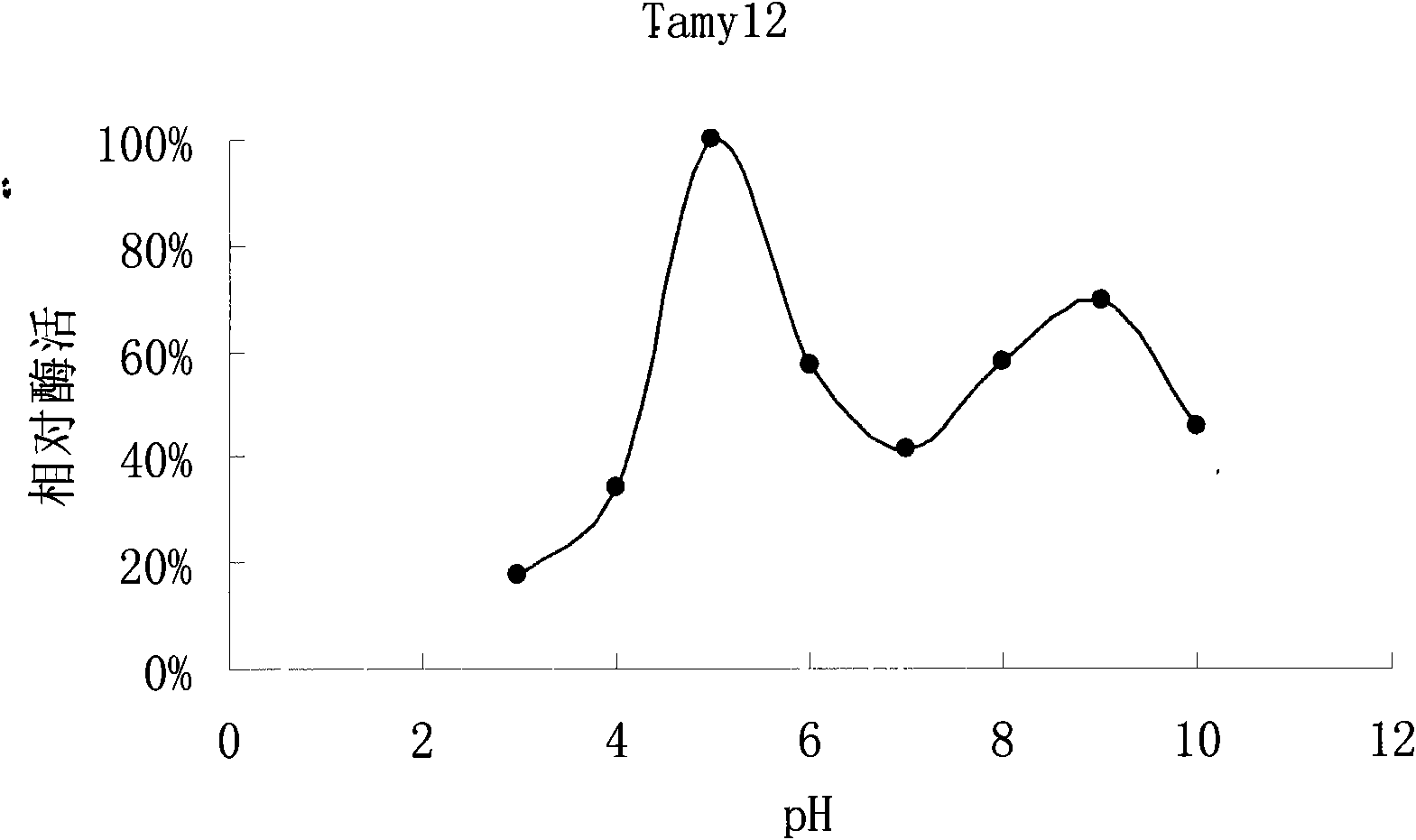Thermophilic bacillus pumilus strain Tamy12 and high-temperature amylase produced by same
A technology of Bacillus pumilus and high-temperature amylase, applied in the field of applied microorganisms, can solve the problems of no Bacillus pumilus, no high-temperature amylase, etc.
- Summary
- Abstract
- Description
- Claims
- Application Information
AI Technical Summary
Problems solved by technology
Method used
Image
Examples
Embodiment 1
[0027] Isolation, screening and identification of Bacillus pumilus sp. Tamy12 strain:
[0028] Tamy12 strain was isolated from Rehai, Tengchong, Yunnan Province. The soil in Rehai, Tengchong was cultured in a strain screening liquid medium at 55°C for a short time in a shaker flask, spread on a strain screening solid medium, and cultured at 55°C for 1 to 2 days, and the strains were picked out and planted on the strain screening solid medium Above, after 3-4 days of culture at 55°C, the iodine solution was colored, and the size of the transparent circle was observed, and the amylase-producing strain Tamy12 was screened out. The strain selection liquid medium is (g / L): (NH 4 ) 2 SO 4 , 1.3; peptone, 1; KH 2 PO 4 , 0.276; MgSO 4 ·7H 2 O, 0.25; yeast extract, 1; Na 2 MoO 4 2H 2 O, 0.000025; CuSO 4 , 0.000016; MnSO 4 ·H 2 O, 0.0022; H 3 BO 3 , 0.0005; ZnSO 4 ·7H 2 O, 0.0005; CoCl 2 ·6H 2 O, 0.000046; CaSO 4 ·H 2 O, 0.06; FeSO 4 , 0.099; pH7.5. Strain screeni...
Embodiment 2
[0031] The Bacillus pumilus sp. Tamy12 strain of Example 1 was inoculated into 50 ml strain screening liquid medium, and cultured on a shaker at 55° C. for 24 hours. Inoculate into 500ml strain screening liquid medium at a ratio of 1:10, and culture on a shaker at 55°C for 4 days. The fermentation broth was centrifuged at 6500 rpm for 10 min at 4°C, the fermentation supernatant was collected, and filtered twice with filter paper. Use a 10,000MWCO membrane to perform ultrafiltration and concentrate to 50ml, and store the concentrate at 4°C.
Embodiment 3
[0033] The Native-PAGE of embodiment 2 concentrates:
[0034] ①Native-PAGE: In discontinuous electrophoresis, the concentration of the separating gel is 12% (starch solution with a final concentration of 0.1% is added to the separating gel), and the concentration of the stacking gel is 5%. Electrophoresis conditions: After adding 15 μl of sample, the voltage was adjusted to 130V, and the electrophoresis was performed at 4°C for 3 hours.
[0035] ②After electrophoresis, half of the gel was soaked in 30% Tris-Tcl buffer, incubated at 55°C for 6 hours, and stained with iodine solution. According to the nature of iodine-starch color development, there will be obvious hydrolysis circles around the amylase hydrolyzed.
[0036] ③ Gel staining and decolorization: Stain and decolorize the other half of the gel. The steps are:
[0037] a. Put the gel in a plastic box, add Coomassie Brilliant Blue R250 staining solution (submerged gel), and stain on a decolorizing shaker for 30 minute...
PUM
 Login to View More
Login to View More Abstract
Description
Claims
Application Information
 Login to View More
Login to View More - R&D
- Intellectual Property
- Life Sciences
- Materials
- Tech Scout
- Unparalleled Data Quality
- Higher Quality Content
- 60% Fewer Hallucinations
Browse by: Latest US Patents, China's latest patents, Technical Efficacy Thesaurus, Application Domain, Technology Topic, Popular Technical Reports.
© 2025 PatSnap. All rights reserved.Legal|Privacy policy|Modern Slavery Act Transparency Statement|Sitemap|About US| Contact US: help@patsnap.com



